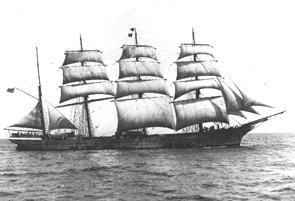

Enforced Emigration Records
By Ken Griffen
This is an extract from the talk that Ken gave at the Sole Society Annual Conference.
Reproduced with kind permission
Dependent on the type of crime committed, i.e. whether it was a capital offence or not, it would be sent to one of two types of Courts:
Assizes held in circuits twice a year and occasionally specially when needed
Quarter Sessions held four times a year as the name suggests
Records for the Assizes are held at the PRO at Kew, while the Quarter Sessions are held at local record Offices. In Wales and in Scotland a different system is adopted and the records are held in Wales and Scotland.
In London, the Sessions were held more frequently 10 times a year with London and Middlesex being held at the Old Bailey or the central criminal court at the same time. There were quarter sessions held at Westminster.
The Indictment contains the name of the criminal, the place where the offence took place, details of the crime together with the value of the goods and the owner or owners. On the reverse are listed all the witnesses and the outcome of the trial (the sentence or acquittal).
Witness statements are always submitted to the court as well as the witnesses attending. Some of these statements survive, although very few have been retained for the assizes.
Following the trial there will be an entry in the process or agenda book which may not give any more detail.
The bundle of papers for the trial will contain those selected for the jury and may probably have a gaol calendar listing all the people on trial at this session. It is here that you are likely to get the age of the criminal and their place of residence together with a repeat of the details of their crime and the name of the justice of the peace who brought the case to court.
There are Gaol records for some of the Gaols which identify the date of the prisoner being put into gaol and the date of discharge. Where no gaol records exist you may have to refer to the gaolers accounts which should be in the quarter sessions records as his accounts have to be agreed by the sessions This will include those prisoners prosecuted at the assizes. His accounts will give you the cost of transporting the prisoners to the prison hulks in London. It may even tell you the name of the hulk to which he was sent.
Another source of the detail of the crime is the report in the local newspaper. You should certainly look just after the date of the trial and also immediately before because he may be mentioned in the 'people up for trial'. Also look at the newspaper just after the event happened (the date mentioned on the indictment).
 To
find out whether your convict was transported you have to go to the PRO at Kew.
The main record here is a list of the convicts on each boat in ho 10. It
is not in alphabetical order, but is listed chronologically by the date the boat
sailed with the convicts in county and date order of their trial. The Scottish
and foreign trials are at the end. So you have to know the place where your
person was tried and search every ship.
To
find out whether your convict was transported you have to go to the PRO at Kew.
The main record here is a list of the convicts on each boat in ho 10. It
is not in alphabetical order, but is listed chronologically by the date the boat
sailed with the convicts in county and date order of their trial. The Scottish
and foreign trials are at the end. So you have to know the place where your
person was tried and search every ship.
Another record is the prison hulk records. These are not user friendly either. For you need to know which hulk you convict was sent on and search for the date the convict was sent from the local gaol. There are over 100,000 entries to look through.
If you find that you convict was sent, then there are the ticket of leave, conditional pardon and free pardon records to check through. Again no index, just in date order and there may not be an entry as the convict may have died before he got his ticket of leave.
If you have a convict going to Australia then you should ask whether there is a surgeonís record. These are in adm 101 class.
If you think that there may have been a petition for your convict to stay or even an application by his wife to go with their menfolk then you could look at the petitions. These are filed in date order of month of application. Be prepared for a long trawl.
Having finally trawled through the British records you need to research the Australian records. These will give much more personal detail about your convict. When each criminal arrived they recorded these details on an indent. The indent is added to throughout the convict's stay, with the place and person to whom he is assigned and any details of further crimes committed in Australia. Any changes of status i.e. ticket of leave and conditional pardon will be recorded as well as his leaving the colony or his death. There may also be recorded any marriage.
You should also look at Australian musters for these record, like our census, where the criminal was and also records the boat he went out on. These are in book form at Kew and are for various dates both for NSW and VDL
Return to The Sole Society Home Page